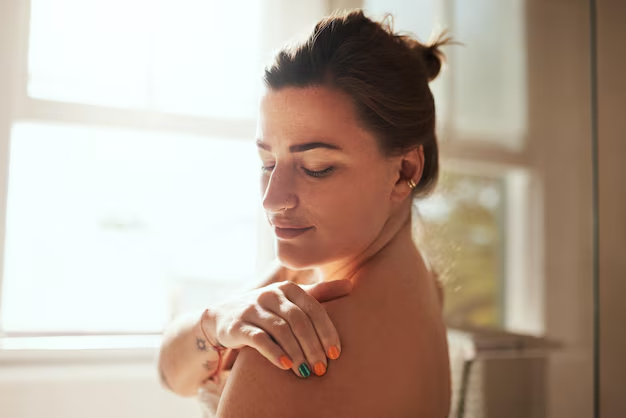Niacinamide and Acne: Understanding the Link and What You Need to Know
When it comes to skincare, the quest for the perfect routine can often feel overwhelming. With countless ingredients promising flawless skin, niacinamide stands out as a go-to for various skin woes, including acne. Yet, if you've just added it to your skincare arsenal and noticed new breakouts, you're not alone in wondering: Can niacinamide cause acne? Let's dive into this topic to unravel the truth and help you make informed decisions for your skincare routine.
What is Niacinamide?
Niacinamide, also known as vitamin B3, is a water-soluble vitamin that works in synergy with the natural substances in your skin to improve various skin conditions. Its versatility makes it a popular choice for many skincare enthusiasts.
Benefits of Niacinamide:
- Reduces Inflammation: Niacinamide is known for its anti-inflammatory properties, making it beneficial for calming irritated skin and reducing redness.
- Regulates Sebum Production: It can help balance oil production, which is particularly beneficial for those with oily or combination skin types.
- Improves Skin Barrier: Strengthening the skin’s barrier function helps retain moisture, keeping the skin plump and hydrated.
- Anti-Aging Effects: Regular use of niacinamide can reduce the appearance of fine lines and wrinkles.
- Hyperpigmentation Treatment: Over time, niacinamide can fade dark spots, contributing to a more even skin tone.
Does Niacinamide Cause Acne?
For many, the initial reaction to niacinamide is positive, showing improvements in skin texture and reduction in breakouts. However, some report an increase in acne after introducing niacinamide to their routine. Let’s explore why this might happen.
Understanding Skin Purging
Sometimes, the introduction of a new ingredient can lead to what is known as a "purge"—a process where existing acne lurking beneath the skin surface comes to a head. This is not uncommon with active ingredients like niacinamide, which can expedite skin turnover.
How to Identify Skin Purging:
- Duration: Skin purging typically lasts a few weeks as the skin adjusts to the product.
- Location: Breakouts occur in areas where you usually experience acne.
- Appearance: Often includes tiny, surface-level bumps that might clear faster than usual.
Identifying an Adverse Reaction
If your breakouts are severe, persistent, and occur in new areas, you might be experiencing an adverse reaction rather than a purge.
- Check for Other Ingredients: Niacinamide products often contain other active ingredients that might irritate.
- Patch Test: Before regular use, conduct a patch test to ensure compatibility with your skin.
- Review Concentration: Opt for products with a lower concentration (around 2-5%) if your skin is sensitive.
Niacinamide in Skincare: Choosing the Right Product
Choosing the right product can determine your skin's response to niacinamide. Here are some aspects to consider:
Product Formulation
Niacinamide is available in various formulations, including serums, creams, and cleansers. Serums are usually more concentrated, providing a powerful dose of active ingredients, while creams offer a more diluted form for sensitive skin.
- Serums: Ideal for direct application after cleansing. Look for clear instructions on usage frequency.
- Moisturizers: For those with sensitive skin, a niacinamide-infused moisturizer can provide gentler integration.
- Cleansers: These offer the lightest application and are less likely to cause irritation.
Concentration and Combination
A typical niacinamide product concentration ranges between 2% and 10%. Start with a lower concentration to monitor the skin’s reaction. Moreover, products combining niacinamide with other soothing ingredients like aloe vera or hyaluronic acid can offset potential irritation.
How to Incorporate Niacinamide into Your Routine
Incorporating niacinamide into your routine can be straightforward, but it's important to do it mindfully to minimize adverse reactions. Here's a basic guideline:
- Start Slowly: If you're new to niacinamide, begin using it a few times a week and gradually increase the frequency.
- Complementary Products: Pair it with sunscreen and avoid using it simultaneously with strong acids (like AHAs and BHAs) without guidance.
- Layering Tips: Niacinamide is suitable for both AM and PM routines. If layering, apply it after cleansing and toning but before heavier creams or oils.
Skincare Tips for Achieving Acne-Free Skin
While niacinamide is a valuable component, maintaining a broader skincare regimen is essential for clear skin. Here are some additional tips:
Keep Skin Clean
Daily cleansing is crucial—opt for sulfate-free cleansers that remove impurities without stripping natural oils.
Moisturize Adequately
Regardless of skin type, hydration is key. Use non-comedogenic moisturizers to maintain balance without clogging pores.
Sun Protection
Using a broad-spectrum SPF daily shields your skin from UV damage and prevents post-acne hyperpigmentation from worsening.
Healthy Lifestyle Choices
Diet, stress management, and sleep play a significant role in skin health. Aim to maintain a balanced diet, reduce stress, and ensure adequate rest.
The Verdict: Embracing Niacinamide
Niacinamide has earned its place in the skincare world due to its versatile benefits, from reducing inflammation and redness to regulating oil production and improving the skin barrier. However, like any skincare ingredient, its success and compatibility lie in individual skin responses.
If you notice adverse reactions that persist, discontinuing use or consulting with a skincare professional may be wise. For most, with proper integration and patience, niacinamide can contribute significantly to achieving healthier, clearer skin.
Key Takeaways For A Glowing Routine
- 🧪 Start Slow: Introduce niacinamide gradually to observe your skin's reaction.
- 🧴 Choose Wisely: Opt for suitable formulations and concentrations for your skin type.
- 🔍 Watch for Purging: Initial breakouts may be temporary as skin adjusts.
- ☀️ Don’t Forget SPF: Always follow up with sunscreen to protect your skin.
- 🧘 Embrace Balance: A holistic approach with diet, stress reduction, and sleep complements skincare.
Incorporating niacinamide efficiently into your skincare routine can pave the way for healthier, acne-free skin, but understanding your skin’s unique needs will always remain paramount.
